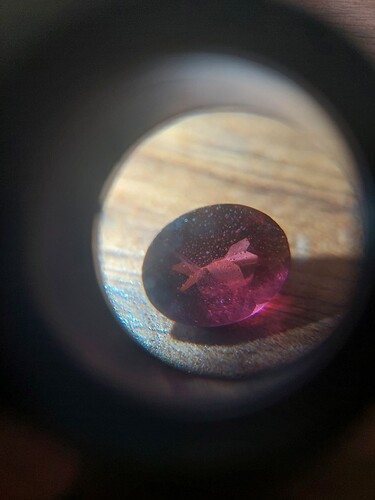HI everyone,
I recently got this gemstone in a parcel i ordered. it is supposed to be garnet but the inclusions are very unusual based on the amount of round bubbles my best guess is either glass or synthetic. Hoping someone can confirm.
If you can do an RI test that would help give you your answer.
-Daniel
Isaac, welcome to the community!
I agree with @DanielB66512! An RI test would definitely help. A polariscope could help too.
Out of curiosity, was the entire parcel supposed to be a specific type of gemstone?
Do the facet edges look sharp and clean or somewhat rounded?
A quick test that could help, would be an immersion test using water. Some types of common glass will almost completely disappear when submerged in water. It would help to have a reference stone (not from the parcel), but similar in color if possible.
Issac,
Various gem species (including garnets) can have what looks like air bubbles, but can be natural inclusions like CO2 bubbles, multi-phase or even solid inclusions.
Try for the RI, and also see if you can get a look through a microscope.
Many garnets are attracted to a strong magnet and can be pulled across a counter. This test is not a 100% determination, but can be a strong indicator of its species.
synthetic garnets most commonly made by Czochralski method… YAG garnets first made for lasers… would have bubbles and curving growth lines…RI and SG should distinguish. Garnet is isometric so polarization is same for all crystal faces.
Sample has too many bubbles for natural garnet. prior post by beargems correct about CO2 and multiphase inclusions in garnets but gas bubble inclusions not common… some geochemical controversy whether C02 bubbles can survive migmatite metamorphic grade transition…
